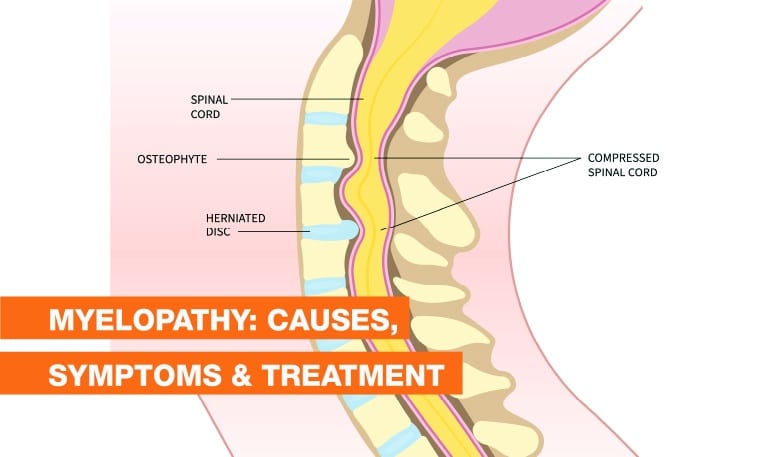Myelopathy: Causes, Symptoms & Treatment
, 8 months ago
If you want to learn what is myelopathy
, its causes, symptoms, and treatment, then read further. Myelopathy
is a spinal cord disorder caused by spinal cord compression. The compression may occur due to spinal stenosis, disc degeneration, disc herniation, trauma, or autoimmune disorders. It is a neurological condition that causes loss of balance, pain, numbness, and loss of coordination. Myelopathy
can occur in any part of the spinal cord. For example, if it occurs in the neck, it is called cervical myelopathy. If it occurs in the middle region, it is called thoracic myelopathy, and if it occurs in the lower part of the spine, it is called lumbar myelopathy. If it is not treated on time, it can cause permanent nerve damage and injury to the spine.
Causes of Myelopathy
Myelopathy can occur due to compression of nerve roots and spinal cord. It may be caused due to bone spurs, inflammation, spinal degeneration, and arthritis. It is important to determine the root cause of myelopathy to get the best possible treatment. Other causes of myelopathy are:
- Inflammatory diseases such as arthritis
- Herniation of spinal discs
- Degenerative diseases such as spinal stenosis
- Injury to the spinal cord
- Tumors, cysts, and herniation
- Neurological problems
Symptoms of Myelopathy
Many nerves get affected due to myelopathy. The nerves control different movements and functions in the body. Symptoms of myelopathy depend on the part of the spinal cord affected. Common symptoms of myelopathy are:
- Pain in the back
- Tingling, weakness and numbness in the arms, legs, and feet
- Imbalance of the body
- Reflexive changes in the extremities
- Motor skills, such as holding an object, are affected
- Loss of bowel or bladder control
Treatment of Myelopathy
An orthopaedic doctor will determine the cause of myelopathy to give the best treatment of myelopathy
. The treatment depends on the causes & symptoms of the patient. The orthopaedic doctor at the QI spine clinic can make an individualised treatment plan to relieve your symptoms and slow down the progress of the condition.
Non-Invasive Treatment
Non-invasive treatment of myelopathy includes the following:
Physical exercises to strengthen the back muscles
Non-steroidal anti-inflammatory drugs to relieve pain
Bracing may be done to support the spinal structure
Steroidal injections may be given in the spine to reduce inflammation and pain
The orthopaedic doctors at the QI spine clinic offer non-invasive treatment in most cases until surgery is required. Therefore, you can consult with an orthopaedic doctor at the QI spine clinic to get the best treatment for myelopathy
.
Lifestyle modifications
Surgical Treatment
The orthopaedic doctor will take your medical history and may order tests such as X-rays, CT scans, and MRIs to determine the condition of your spine. After determining the cause and symptoms, your doctor will decide if surgical treatment is required to remove abnormalities and reduce pressure on the nerves and spinal cord. Surgical treatment includes:
- Spinal fusion
- Laminectomy
- Discectomy
- Foraminotomy
- Replacement of discs
Conclusion
Myelopathy occurs due to spinal compression. It is a neurological condition caused due to spinal stenosis, disc degeneration, inflammatory diseases, etc. The symptoms depend on the type of myelopathy and include pain, numbness, tingling, and loss of function in the affected part. Early treatment and diagnosis can help to relieve pressure on the nerves and spinal cord can prevent further damage. Therefore, consult with an orthopaedic doctor immediately if you experience pain or tingling in the arms or legs.

